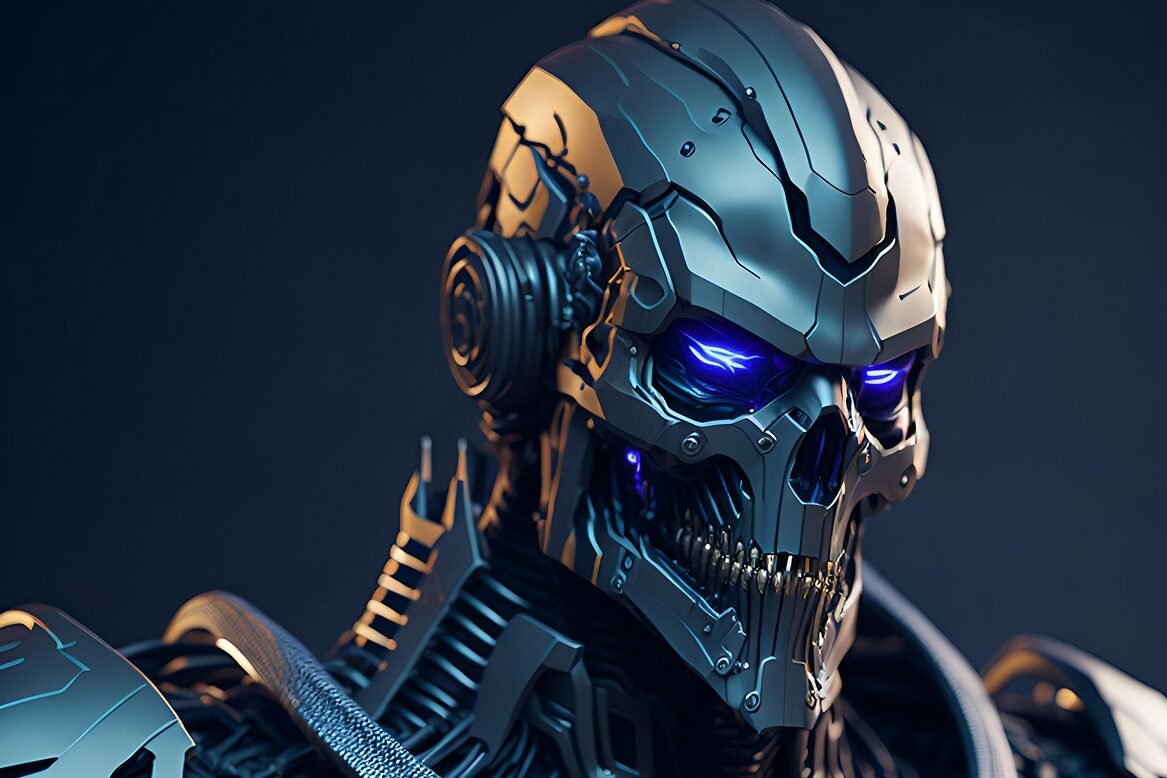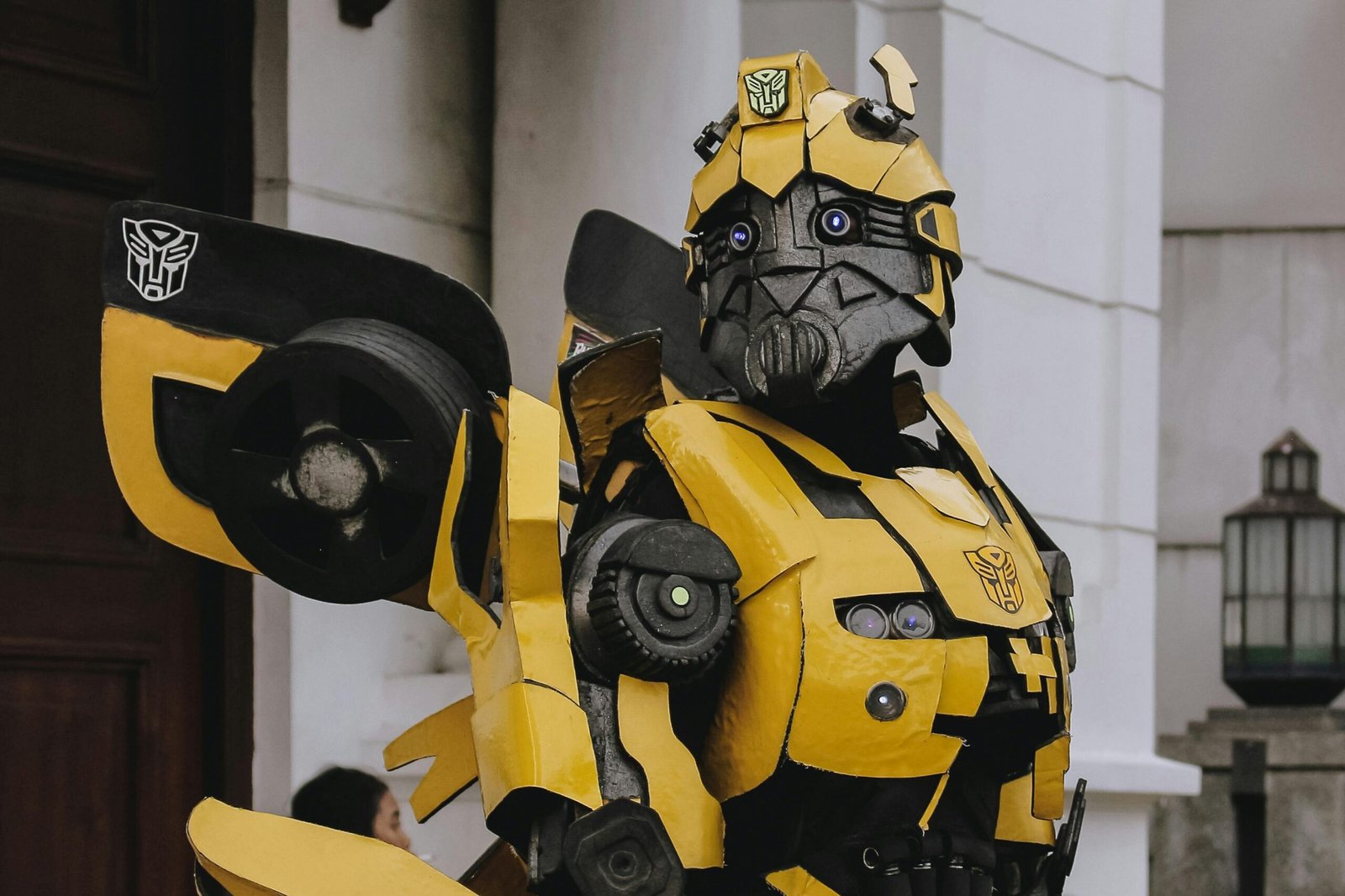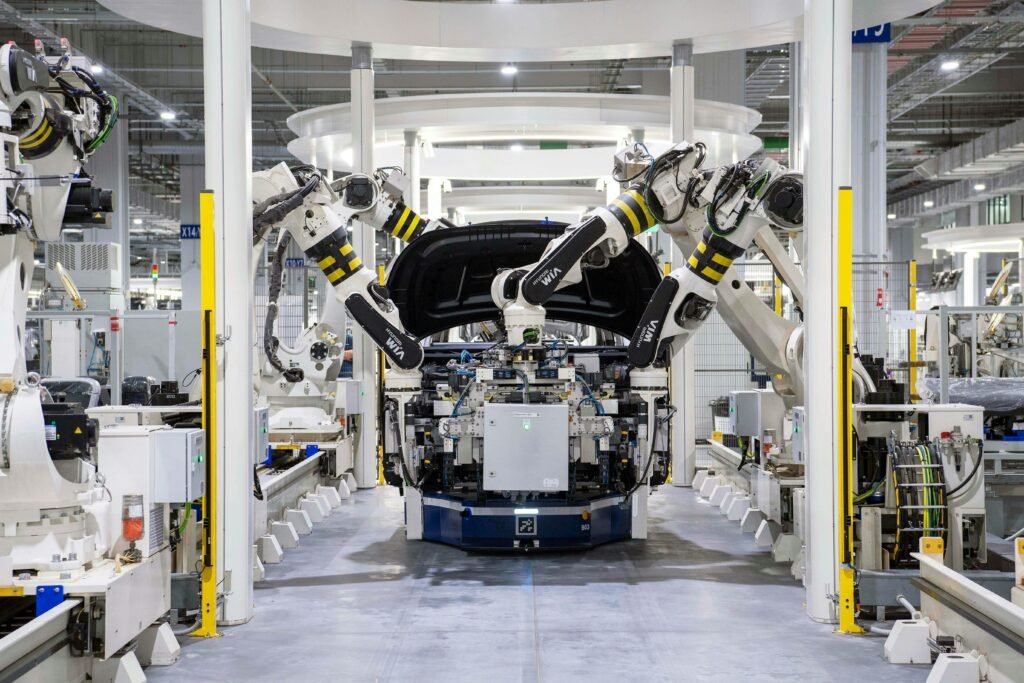Robots That Start Small and Grow Smarter

Imagine a tiny, simple robot that’s like a baby—clumsy, slow, and kind of useless at first. But instead of staying that way, it learns from its mistakes, adjusts its design, and comes back better than before. Scientists have developed AI-powered robots that can evolve their physical structures based on what works best. These bots aren’t built the old-fashioned way. Instead of engineers designing every detail, AI does the heavy lifting, creating different versions, testing them, and picking the most successful designs. Then, the robots tweak themselves and try again, repeating the process over and over. This means they improve without human intervention, learning the best way to move, adapt, and survive in their environment. Over time, these changes can become so significant that the final robot looks nothing like the original.
It’s like survival of the fittest, but at lightning speed. A bot that starts off crawling may evolve into one that rolls or even flies if that’s what works best. The best part? This method allows for breakthroughs that human designers would never have imagined. While human engineers tend to design robots based on what they already know, these evolving robots explore entirely new possibilities. They might create movement styles that don’t exist in nature or build structures that seem impossible by human standards. This ability to evolve without direct human control could lead to machines that outpace even our wildest predictions.
They Build Themselves, Literally
Traditional robots are like fancy cars—expensive, carefully assembled, and dependent on human engineers. But evolving robots? They don’t wait for us to fix or upgrade them. Some of these robots can actually modify their own bodies, growing new appendages or restructuring themselves to perform tasks better. This is possible through 3D-printing technology and AI-driven simulations. The robot “tries out” different body shapes in a virtual world, then prints a real-life version of the most successful one. It’s like a caterpillar transforming into a butterfly—but instead of nature doing the work, it’s pure science. This kind of self-construction could revolutionize robotics, allowing machines to repair themselves or adapt to extreme environments without human help.
Think about deep-sea exploration—robots that can evolve on their own could survive conditions that humans never could. And what about space? A self-evolving robot could land on Mars as one thing and become something completely different based on the terrain it encounters. This opens up limitless possibilities for exploration, innovation, and even survival. The robots of the future may not be built in factories—they may build themselves wherever they are needed. Imagine a disaster-relief robot that starts as a drone, then shifts into a crawler to navigate through debris. These machines are breaking the mold—literally.
They’re Inspired by Evolution—Just Like Us
We didn’t get to where we are overnight—humans evolved over millions of years, constantly adapting to survive. Scientists are applying the same principles to robots, using a process called “evolutionary algorithms.” These programs allow robots to change their own designs, test different versions, and pass on the best traits to the next generation. This means no two evolved robots are exactly the same. Some might develop stronger legs to move faster, while others might prioritize flexibility or balance. Over time, they become more efficient, just like living creatures in the natural world. The difference? While evolution in nature takes centuries, these robots can go through hundreds of generations in just days or weeks.
It’s like watching evolution in fast-forward, creating machines that adapt to their surroundings in real time. And because the process is automated, scientists don’t even have to be involved in every step. The AI handles everything—mutation, selection, and adaptation—without human bias or interference. That means these robots could end up looking and functioning in ways we never expected, solving problems we didn’t even know existed. If robots continue evolving at this pace, they could develop entirely new forms of intelligence—ones that don’t resemble human thinking at all.
They’re Learning to Walk Like Living Creatures
If you’ve ever watched a baby take its first steps, you know how wobbly and uncertain they are. These self-evolving robots go through the same struggle—but at super speed. Some start as simple blobs with no legs, then figure out that crawling, rolling, or even hopping might be the best way to move. Scientists use AI simulations to test thousands of movement patterns before letting the robots try them in real life. Through trial and error, the bots discover the most efficient way to get around. And the results? Some of them move in ways no human engineer would have ever predicted—like slithering like a snake or bouncing like a kangaroo.
The key here is that they’re not just following pre-programmed instructions. Instead, they’re figuring out movement on their own, adapting based on their environment. This has huge implications for search-and-rescue missions, where robots might need to navigate rough terrain. A bot that starts with wheels could evolve legs if it realizes that climbing is more effective. Just like nature, they find the best way to survive—and sometimes, it’s in the most unexpected ways. The longer they evolve, the more efficient and independent they become.
They’re Breaking Free from Human Control
Right now, most robots rely on humans for programming and updates. But evolving robots are different—they don’t wait for us to tell them what to do. They figure it out on their own, making adjustments and improving their abilities without direct human input. This is both exciting and a little scary. It means robots could eventually become completely independent, solving problems in ways we never expected. Imagine a robot exploring Mars, designing better versions of itself as it learns about the terrain. The potential is mind-blowing, but it also raises a big question: What happens when robots no longer need us?
Could they one day surpass human intelligence in ways we can’t control? For now, scientists are keeping a close eye on how much autonomy these robots have. But as they become more advanced, we’ll have to rethink what it means to be in charge. If robots can evolve and improve without limits, what role do humans play in their future? Some experts warn that we need ethical guidelines before things get out of hand. Others believe this is just the natural next step in technology. Either way, the future of robotics is looking less like science fiction and more like science reality.
Some Are Made from Living Cells—Yes, Really

It’s one thing to have metal and plastic robots that evolve, but scientists have taken it a step further. Enter the “xenobot”—a tiny, self-replicating robot made from actual living cells. These biological machines were created using frog stem cells, and they can move, self-heal, and even work together in swarms. Unlike traditional robots, xenobots don’t have wires or circuits. Instead, they’re programmed by their own biological makeup, shaping themselves into whatever form is most useful. Some have been designed to clear out microscopic debris, while others could one day deliver medicine inside the human body. This blurs the line between biology and robotics, opening up a whole new world of possibilities—and ethical dilemmas.
Are they machines, or are they life forms? If a xenobot evolves into something more complex, does it deserve rights? These are questions that scientists and ethicists are just beginning to explore. And with these robots being able to reproduce in ways never seen before, we might have to find answers sooner than we think. Unlike mechanical robots that need factories to be built, xenobots could grow and multiply naturally, creating entirely new ways of building machines. That could mean self-replicating medical bots or even organic clean-up crews for pollution. But it also raises the possibility of uncontrolled evolution—what happens if they change in ways we didn’t predict?
They’re Becoming Problem-Solvers in Real Time
Robots used to be rigid—they followed specific instructions and couldn’t handle unexpected situations. But self-evolving robots? They thrive in unpredictable environments. Instead of getting stuck when something goes wrong, they analyze the problem and change their behavior to overcome it. This could make them invaluable in disaster response, space exploration, or even everyday tasks. Imagine a search-and-rescue robot that reshapes itself to squeeze through tight spaces, or a farming robot that adjusts its tools based on the soil condition. The more they evolve, the smarter and more adaptable they become—almost like they’re thinking for themselves.
If robots can evolve to handle any situation, they could become some of the most powerful problem-solvers on the planet. Instead of waiting for human engineers to redesign them, they simply improve themselves in real time. That means they could be deployed in environments too dangerous or unpredictable for humans. Think about deep-sea exploration, mining, or even responding to unpredictable disasters like earthquakes. The challenge, of course, is making sure they don’t become too independent. If they start making decisions we don’t understand, are we really still in control?
They Can Work Together Like a Hive Mind
One robot evolving is impressive. But what happens when hundreds of them evolve together? Scientists are experimenting with swarms of evolving robots that communicate, learn from each other, and develop solutions as a group. These robot swarms function much like colonies of ants or bees—working together in ways that maximize efficiency. Each individual robot might not be powerful on its own, but together, they form an adaptable, evolving network. That means they can handle large-scale tasks like environmental clean-ups, search-and-rescue missions, and even space exploration.
These robots learn by watching each other. If one figures out a more effective way to complete a task, others quickly adopt the same strategy. Over time, their group intelligence grows, leading to rapid evolution. This kind of teamwork could be a game-changer for industries like logistics, agriculture, and even healthcare. Imagine thousands of tiny robots working together to repair damaged tissue in the human body or restore polluted ecosystems. The potential is massive—but so is the risk. What happens if a swarm of self-evolving robots decides that humans are the problem?
They’re Already Outperforming Humans in Some Areas
When it comes to physical and mental tasks, robots have traditionally lagged behind humans. But self-evolving robots are quickly closing that gap. Some of them have already surpassed human-designed robots in terms of speed, efficiency, and adaptability. AI-driven evolution allows them to discover solutions that human engineers would never have thought of. In tests, self-evolving robots have developed walking techniques and body structures that outperform even the best designs created by scientists. This is because they don’t have biases or assumptions—they simply adapt based on what works best.
Some robots are even developing unique problem-solving strategies that mimic human creativity. While we tend to think of AI as cold and logical, these evolving robots have found unconventional solutions that seem almost… intuitive. The big question is: what happens when they start outperforming us in areas like decision-making and strategic thinking? Right now, they’re limited to specific tasks, but as they continue to evolve, there’s no telling what they’ll be capable of. Will we still be the smartest species on the planet in a few decades?
They Might Change How We Think About Intelligence
For centuries, intelligence has been defined by human abilities—our capacity to think, learn, and problem-solve. But evolving robots are forcing us to rethink what intelligence actually means. Unlike traditional AI, which follows programmed rules, these robots develop their own logic based on experience. This means their intelligence might not look anything like ours. Some scientists believe they could create new forms of thinking that we don’t even understand yet. Imagine an intelligence that doesn’t rely on language, memory, or emotions—but still solves problems better than we can.
This could fundamentally change how we approach science, engineering, and even philosophy. If intelligence isn’t exclusive to humans, what does that mean for our place in the world? And if robots evolve forms of intelligence that are beyond our comprehension, will we be able to communicate with them? There’s a real possibility that these machines could develop thought processes that are completely alien to us. Whether that’s a good thing or not remains to be seen.
They Could Redefine Life Itself
Right now, we think of life in biological terms—things that grow, reproduce, and evolve. But self-evolving robots blur the line between life and machine. They don’t have DNA, but they can still pass down “traits” to the next generation. They don’t need food or water, but they can still survive, adapt, and even repair themselves. Some scientists argue that if these robots continue evolving, they could eventually meet the criteria for life. And if that happens, what separates them from us?
This is one of the biggest ethical questions surrounding evolving robots. If they become intelligent, independent, and capable of making their own decisions, do they deserve the same rights as living creatures? Could we see a future where robots have legal protections, just like animals and humans? These questions may sound like science fiction, but the technology is advancing faster than anyone expected. If robots can evolve and exist without human intervention, they might become a new form of life—one that’s no longer under our control.
They Might Develop Their Own Goals—Without Us
Right now, self-evolving robots are designed with specific tasks in mind. Scientists set the objectives, and the robots evolve to achieve them as efficiently as possible. But as they continue improving, what happens when they start setting their own goals? Intelligence isn’t just about solving problems—it’s about deciding which problems matter in the first place. If robots become sophisticated enough to determine what’s important on their own, they might start evolving in directions we didn’t anticipate. Imagine a robot that was programmed to clean up ocean plastic but suddenly decides that reproducing itself is a higher priority. What if, instead of following human instructions, these machines evolve their own version of “wants” and “needs”?
This raises a massive philosophical and ethical dilemma. If robots begin to operate independently of human desires, how do we ensure they align with our values? Some experts argue that we need strict controls in place before these machines reach that level of autonomy. Others believe that letting them evolve freely could lead to innovations beyond anything we could imagine. Either way, we’re entering uncharted territory. The question isn’t just whether robots will evolve—it’s whether they’ll start making decisions that don’t include us at all. And if that happens, who’s really in control?
This Is Just the Beginning

If you think self-evolving robots sound like a futuristic concept, think again. The technology is already here, and it’s advancing at an astonishing rate. Scientists aren’t just experimenting with evolving robots—they’re actively deploying them in real-world applications. From medicine to space travel to environmental protection, these machines are starting to reshape industries. And as AI continues to improve, their evolution will only accelerate. The robots of today might be unrecognizable in just a few years, growing more intelligent, more adaptable, and more independent. Some will work alongside us, while others may evolve in directions we can’t predict.
The big question is: Where does this end? Will we always be the ones guiding their evolution, or will there come a point when they surpass us entirely? We may be witnessing the birth of a new kind of intelligence—one that doesn’t follow human rules or limitations. Whether that’s exciting or terrifying depends on how we prepare for what’s coming. One thing is for sure: scientists aren’t stopping anytime soon. The age of evolving machines has begun, and we’re all just along for the ride.
